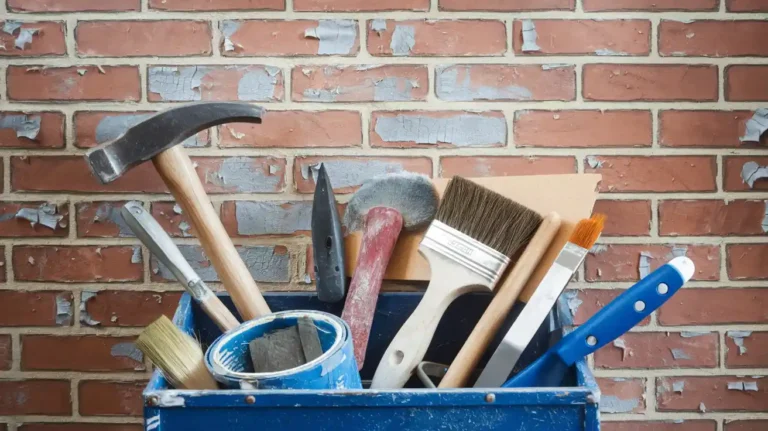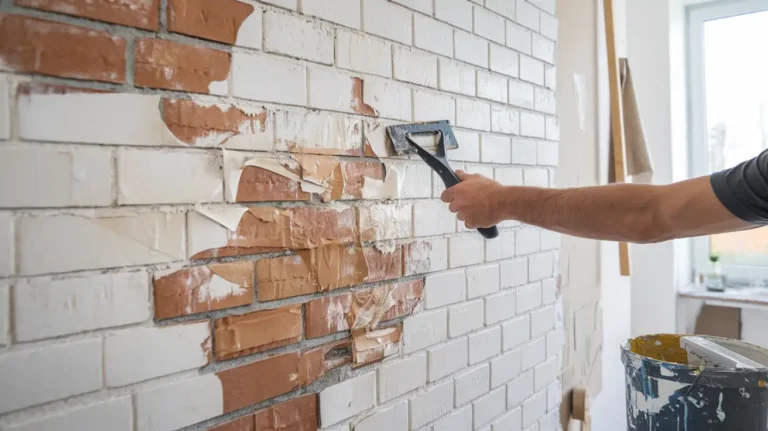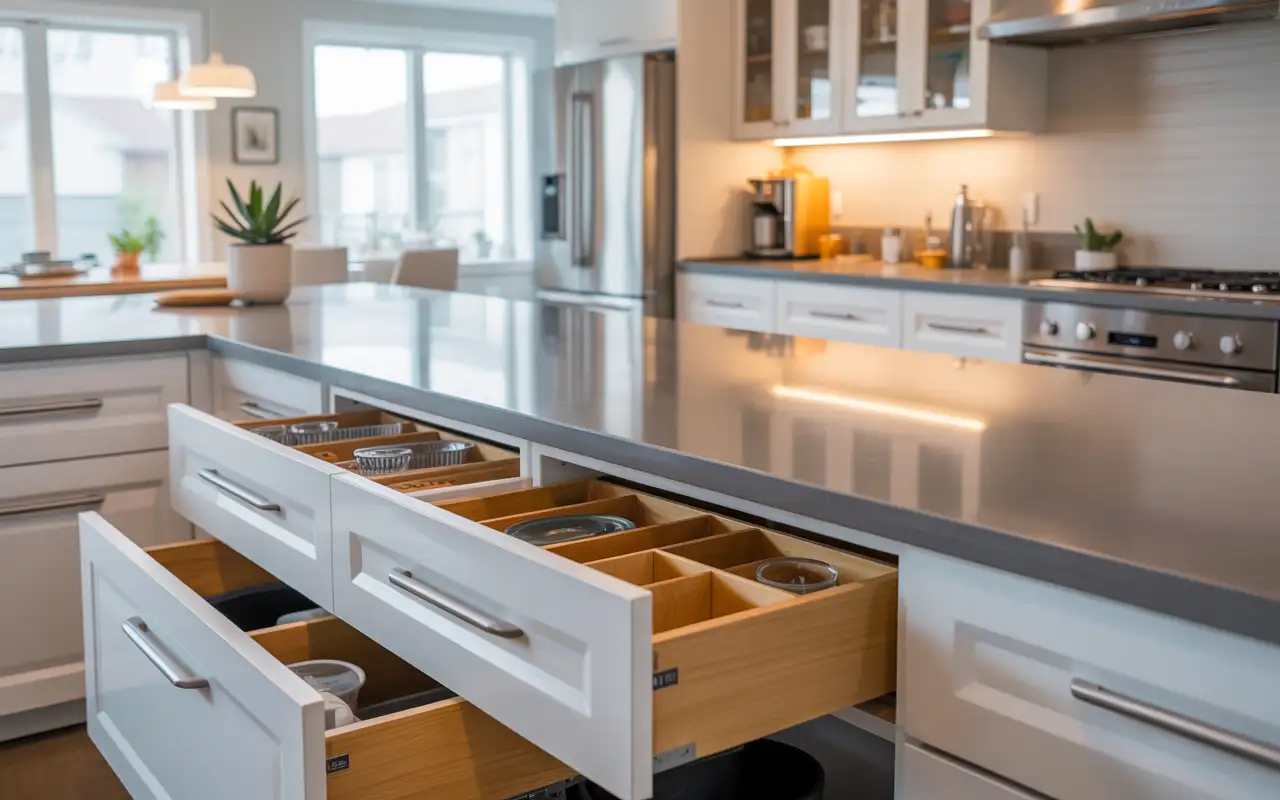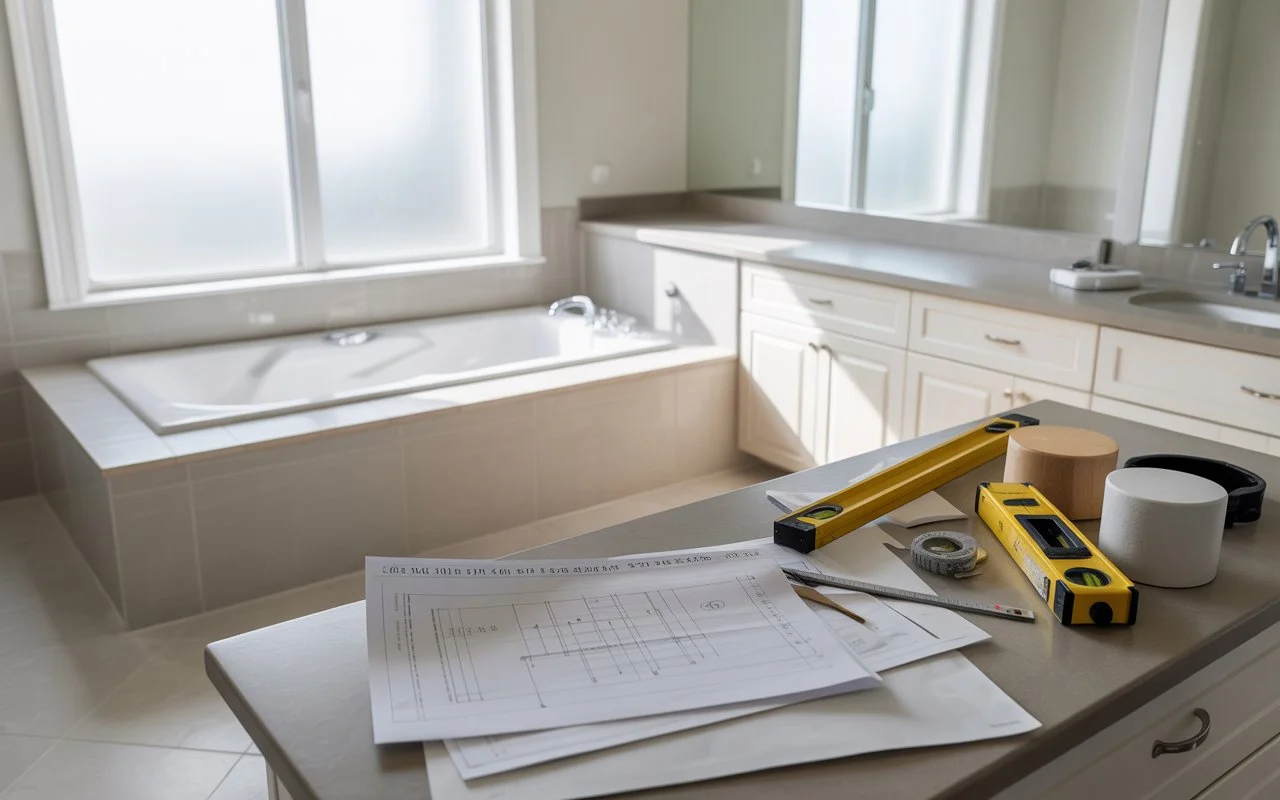You can remove paint from brick using four proven methods: chemical paint stripper, manual scraping, pressure washing, or eco-friendly solutions. Chemical strippers work best for most projects. The process takes 1-3 days depending on paint layers and surface size. Success depends on paint age, brick condition, and choosing the right removal method for your situation.
Removing paint from brickwork isn’t quick, but it’s doable with the right approach. This guide shows you exactly how to remove paint from brick safely, what tools you need, real costs, and when to call professionals. We’ve helped hundreds of San Diego homeowners restore their brick surfaces, and we’re sharing what actually works.
Table of Contents
Can You Remove Paint from Brick?
Yes, you can remove paint from brick, but complete removal isn’t always possible. Brick is porous, meaning paint soaks deep into tiny holes and crevices. The deeper the paint penetrates, the harder it becomes to remove every trace.
Several factors affect your success rate:
- Paint Age: Fresh paint (under 2 years old) comes off easier than decades-old paint. Older paint bonds more strongly with brick as it cures and oxidizes over time.
- Paint Type: Latex paint sits closer to the surface than oil-based paint. Oil-based paints and primers penetrate deeper, making removal more challenging. If someone applied primer before painting, you’re dealing with multiple bonded layers.
- Brick Condition: Older brick from pre-1900 homes is softer and more fragile. Modern brick is harder and can handle more aggressive cleaning. Damaged or crumbling brick requires gentler methods.
- Number of Layers: Each additional coat makes removal exponentially harder. One thin layer might take an afternoon. Three or four coats could take several days.
Most homeowners achieve 85-95% paint removal on newer applications. For paint that’s been on brick for 20+ years, expect some ghosting or staining to remain even after thorough removal.
Before Getting Started: Essential Steps and Safety

Proper preparation prevents damage to your brick and keeps you safe during paint removal.
Test for Lead Paint
Homes painted before 1978 may have lead-based paint. Buy a lead testing kit from any hardware store (costs $10-15). If the test shows lead, don’t sand or scrape dry paint. Lead dust causes serious health problems, especially for children and pregnant women.
Your options with lead paint:
- Hire a certified lead-safe contractor
- Paint over it with fresh paint instead of removing it
- Follow EPA RRP guidelines if you proceed with removal
Gather Your Safety Gear
Paint removal involves harsh chemicals and physical work. Protect yourself with:
- Chemical-resistant gloves (neoprene or nitrile)
- Safety goggles (not just glasses)
- N95 respirator mask for chemical fumes
- Long sleeves and pants
- Knee pads for floor-level work
Cost for safety gear: $30-50 total
Prepare Your Work Area
Cover everything nearby with plastic sheeting. Paint stripper damages wood floors, furniture, plants, and concrete. Tape plastic sheets securely so they don’t shift during work.
For indoor projects, open all windows and doors. Set up fans to create airflow. Chemical fumes build up quickly in closed spaces.
For outdoor brick walls, protect nearby plants and grass with tarps. Most paint strippers kill vegetation on contact.
Do a Test Patch
Never start on a visible area. Pick a small, hidden spot (about 1 square foot). Test your chosen removal method there first. Wait 24 hours to check for:
- Brick discoloration or staining
- Mortar damage or crumbling
- Surface texture changes
- How well the paint actually comes off
This test patch saves you from ruining an entire wall with the wrong method.
Paint Removal Methods from Brick Surfaces

Four main methods work for cleaning paint from brickwork. Each has specific uses, costs, and difficulty levels.
Method 1: Chemical Paint Stripper (Most Effective)
Best for: Multiple paint layers, oil-based paints, large areas over 25 square feet
Chemical paint stripper dissolves the bond between paint and brick. It’s the most reliable method for stubborn paint.
Types of strippers:
- Caustic strippers (sodium hydroxide): Work fastest but can discolor some brick. Only used on hard, modern brick. Cost: $20-40 per gallon.
- Solvent-based strippers (methylene chloride or NMP): Handle oil-based paints effectively. Require serious ventilation. Cost: $25-50 per gallon.
- Eco-friendly strippers (soy or citrus-based): Safer for users but work slower (24-72 hours). Best for latex paints. Cost: $30-60 per gallon.
How much you need: One gallon covers 50-100 square feet depending on how thick you apply it.
Time required: 6-24 hours dwell time per application. Expect 2-3 applications for multiple paint layers.
Pros: Removes multiple layers, works on any paint type, doesn’t damage brick when used correctly
Cons: Strong fumes, requires neutralization step, higher cost, messy cleanup
Method 2: Manual Scraping and Wire Brushing
Best for: Small areas under 10 square feet, single thin layer of latex paint, loose or flaking paint
Physical removal works when paint hasn’t bonded strongly to brick.
Tools needed:
- Paint scrapers with replaceable blades ($8-15)
- Wire brushes in various sizes ($10-25)
- Nylon scrub brushes for final cleaning ($5-10)
- Spray bottle with water ($3-5)
Total tool cost: $25-55
Time required: 30-45 minutes per square foot
Technique: Hold the scraper at a 30-degree angle. Use moderate pressure. Spray brick with water while scrubbing to reduce dust and prevent the brush from loading up with paint particles.
Pros: Low cost, no chemicals, good control over pressure
Cons: Extremely labor-intensive, only removes surface paint, won’t work on bonded paint
Method 3: Pressure Washing (Supplemental Method)
Best for: Exterior brick with fresh latex paint (under 5 years old), supplementing chemical stripper
Pressure washing alone rarely removes paint completely. Use it to clean up after chemical treatment or to remove weathered, peeling paint.
Equipment: Rent a gas-powered pressure washer with variable PSI. Cost: $60-100 per day.
Proper PSI settings:
- Start at 800 PSI
- Increase gradually only if needed
- Never exceed 1500 PSI on old brick
- Stay under 2500 PSI maximum on modern brick
Technique: Hold the nozzle 12-18 inches from brick. Use a 45-degree angle. Keep the spray moving constantly. Never point it directly at mortar joints.
Time required: 2-4 hours for a 100 square foot wall
Pros: Speeds up cleanup after chemical treatment, removes loose paint quickly
Cons: Can erode mortar, damage soft brick, force water into walls, won’t remove bonded paint
Warning signs to stop immediately:
- Mortar washing away
- Brick surface pitting
- Water penetrating indoors
Method 4: Natural and Eco-Friendly Solutions
Best for: Minor paint spots, eco-conscious homeowners, sensitive indoor areas
Natural solutions work slowly but avoid harsh chemicals.
White vinegar method: Heat white vinegar (don’t boil it). Apply with a sponge. Let sit for 15 minutes. Scrub with a nylon brush. This only works on very fresh, thin latex paint. Expect 30-40% improvement at best.
TSP cleaning: Mix 1/2 cup trisodium phosphate (TSP) in one gallon of hot water. Scrub the brick thoroughly. TSP removes loose paint and cleans the surface but won’t strip bonded paint. Cost: $8-12 per box.
Soy gel strippers: These eco-friendly alternatives actually work. Products like Soy Gel or Franmar take 24-72 hours but safely remove multiple paint types. Cost: $40-70 per gallon.
Pros: Safer for users and environment, good for indoor projects
Cons: Much slower, won’t handle thick or old paint, requires patience
How to Remove Paint from Brick with a Paint Stripper

This step-by-step process works for most brick paint removal projects using chemical strippers.
Step 1: Clean the Brick Surface
Dirt and soot block stripper penetration. For brick fireplaces, mix TSP with water (1/2 cup per gallon). Scrub the entire surface with a stiff brush. Rinse thoroughly with clean water. Let the brick dry for 24 hours before applying the stripper.
Step 2: Apply Paint Stripper Generously
Use a natural-bristle brush (synthetic bristles may dissolve). Apply a thick coat – about 1/8 to 1/4 inch thick. Thin coats dry too fast and don’t work properly. Work in sections small enough to complete before the stripper dries.
Cover every painted area completely. Don’t worry about using too much. Better to use more than to apply too little.
Step 3: Cover and Wait
Immediately cover the wet stripper with plastic sheeting or wax paper. Press it down gently. Tape the edges so air can’t get in. This keeps the stripper wet and extends its working time.
Wait exactly as long as the product instructions specify. Most strippers need 6-24 hours. Setting a timer helps. Don’t check too early or you’ll release fumes and reduce effectiveness.
Step 4: Remove Softened Paint
Remove the plastic covering. Use plastic scrapers (metal can scratch brick). Scrape off the softened paint in small sections. Work from top to bottom so loosened paint doesn’t drip onto cleaned areas.
Collect all waste in a bucket or on drop cloths. Don’t let it drip onto surrounding surfaces. Paint stripper waste is hazardous and needs proper disposal.
Step 5: Scrub Remaining Paint
After scraping, some paint will remain in brick crevices and texture. Use a wire brush with circular motions. Apply moderate pressure. Brass brushes work better for softer, older bricks. Steel brushes suit harder, modern brick.
For mortar joints and deep texture, use smaller brushes or even dental picks to get into tight spots.
Step 6: Neutralize the Stripper
Caustic strippers must be neutralized or they’ll cause ongoing damage. Mix 1 cup white vinegar per gallon of water. Scrub the entire surface thoroughly. Some products have specific neutralizers that follow those instructions if provided.
Skip this step only if using solvent-based strippers that don’t require neutralization.
Step 7: Rinse Thoroughly
Rinse the brick multiple times with clean water. Use a garden hose, pressure washer on low setting (under 1000 PSI), or buckets of water with a scrub brush. Keep rinsing until water runs clear with no foam or residue.
Let the brick dry completely for 7-14 days before applying any sealers or new finishes.
Step 8: Repeat if Needed
Multiple paint layers often require 2-3 applications. Each round works faster because you’ve already opened up the paint layers. Wait 24 hours between applications.
Real Cost Example for a Typical Project:
- 100 square foot brick fireplace
- 2 gallons paint stripper: $50-100
- Safety gear: $40
- Scrapers and brushes: $30
- TSP and neutralizer: $15
- Plastic sheeting and tape: $10
- Total DIY cost: $145-195
- Time investment: 12-16 hours over 2-3 days
What NOT to Do When Removing Paint from Brick
Never Use Sandblasting
Sandblasting strips paint fast but destroy brick surfaces. The high-velocity abrasive tears away the outer layer of brick, leaving permanent damage. This method also erodes mortar between bricks. Once damaged, brick can’t be repaired, only replaced.
Avoid Muriatic Acid as Primary Remover
Muriatic acid (hydrochloric acid) dissolves paint but also etches brick permanently. It eats away at lime mortar in historic buildings. It creates white efflorescence (mineral deposits) that’s nearly impossible to remove.
If muriatic acid is mentioned for brick, it should only be a heavily diluted final rinse (1:10 ratio) for mineral deposits – never for stripping paint. The risks far outweigh any benefits.
Don’t Skip Neutralization
After using caustic strippers, neutralization isn’t optional. Leftover chemicals cause:
- Long-term efflorescence (white powder on brick)
- Discoloration appearing weeks later
- Problems with future finishes or sealers
Don’t Use Excessive Pressure When Washing
Pressure above 2000 PSI erodes mortar joints, pits brick surfaces, and forces water behind the brick face. We’ve restored dozens of walls damaged by aggressive pressure washing. The repairs cost far more than proper paint removal would have.
After Paint Removal: Next Steps
Final Cleaning
Once all paint is gone, wash the brick one more time with a TSP solution. Rinse thoroughly with clean water. This removes any remaining residue from strippers or paint.
Check for Mortar Damage
Paint removal often reveals crumbling or missing mortar that was hidden under the paint. Damaged mortar should be repointed (repaired) before doing anything else. Repointing costs $5-15 per square foot professionally.
Let Brick Breathe
Natural brick doesn’t need a sealer in most climates. Brick is naturally durable and benefits from breathing (allowing moisture to escape). Wait at least 30 days before considering any protective treatment.
If you live in an extremely harsh climate and want protection, use only silane/siloxane-based penetrating sealers. Never use film-forming sealers that trap moisture inside the brick.
When to Call a Professional to Remove Paint from Brick
Knowing when to hire out is a sign of smart homeownership. You should call a professional for taking paint off brick if:
- The Project is Large: Exterior brick walls require scaffolding and massive labor, making DIY impractical.
- The Brick is Historic: Older, softer, or delicate bricks require gentler methods (like the specialized DOFF steam system) that a professional service can provide.
- Lead-Based Paint is Present: Avoid generating toxic dust. A professional team is mandatory for safe handling.
- You Have Heavy, Stubborn Paint: Multiple layers of old, baked-on oil-based or epoxy paint may require commercial-grade solvents unavailable to the public.
Restore or Revive Your Brick with San Diego Home Remodeling
Whether you are looking to get the classic look back after removing paint from brick or are ready for a fresh new color, San Diego Home Remodeling is here to help. Our team provides expert masonry and painting services in San Diego, ensuring your brickwork is treated with the utmost care. We handle the difficult work of paint removal and post-treatment sealing.
Contact San Diego Home Remodeling today for a free, no-obligation estimate and let us restore your brick to its original beauty!
Conclusion
Taking paint off brick requires patience, the right method, and realistic expectations. Chemical paint stripper handles most jobs effectively, though you’ll likely need multiple applications for stubborn paint. Manual scraping works for small, simple projects. Pressure washing supplements other methods but rarely works alone.
Budget $150-400 for a DIY project depending on size. Plan for 2-4 days of work including dwell time. If your project involves lead paint, covers more than 100 square feet, or includes historic brick, professional help provides better results with less risk.
The most important factor is choosing the right method for your specific situation. Test first, work carefully, and don’t rush the process. With proper technique, you can restore your brick’s natural beauty and enjoy it for years to come.
Frequently Asked Questions
Will power washing damage the brick?
Yes, a pressure washer operating at high pressure will damage the brick, especially older or softer brick. The high-velocity water erodes the brick’s protective face and washes out the mortar. We strongly recommend against using a pressure washer for effective paint on brick removal.
Is Muriatic Acid a safe way to remove paint from brick?
No. Muriatic acid is too harsh and highly corrosive. It can damage the lime in the mortar joints and potentially etch or discolor the brick. We recommend commercial-grade, eco-friendly, or specifically formulated masonry paint stripper instead of relying on dangerous chemicals like muriatic acid strip paint.
How do you remove paint from brick without chemicals?
For how to get paint off brick without solvents, your only non-damaging DIY option is a combination of heat and scraping (using a heat gun on a low setting). This is only feasible for very small, localized areas or a tiny brick fireplace. For large exterior areas, professionals may use specialized, gentle heated water or steam systems.
Can I remove old, peeling paint from brick the same way as fresh paint?
Yes and no. Removing paint from old, peeling paint from brick still requires a chemical stripper, but you may need a stronger, solvent-based product to break the deep chemical bond. Old paint has settled deeper into the porous brick texture, requiring a longer dwell time with the poultice method to ensure the stripper can fully dissolve the material.







